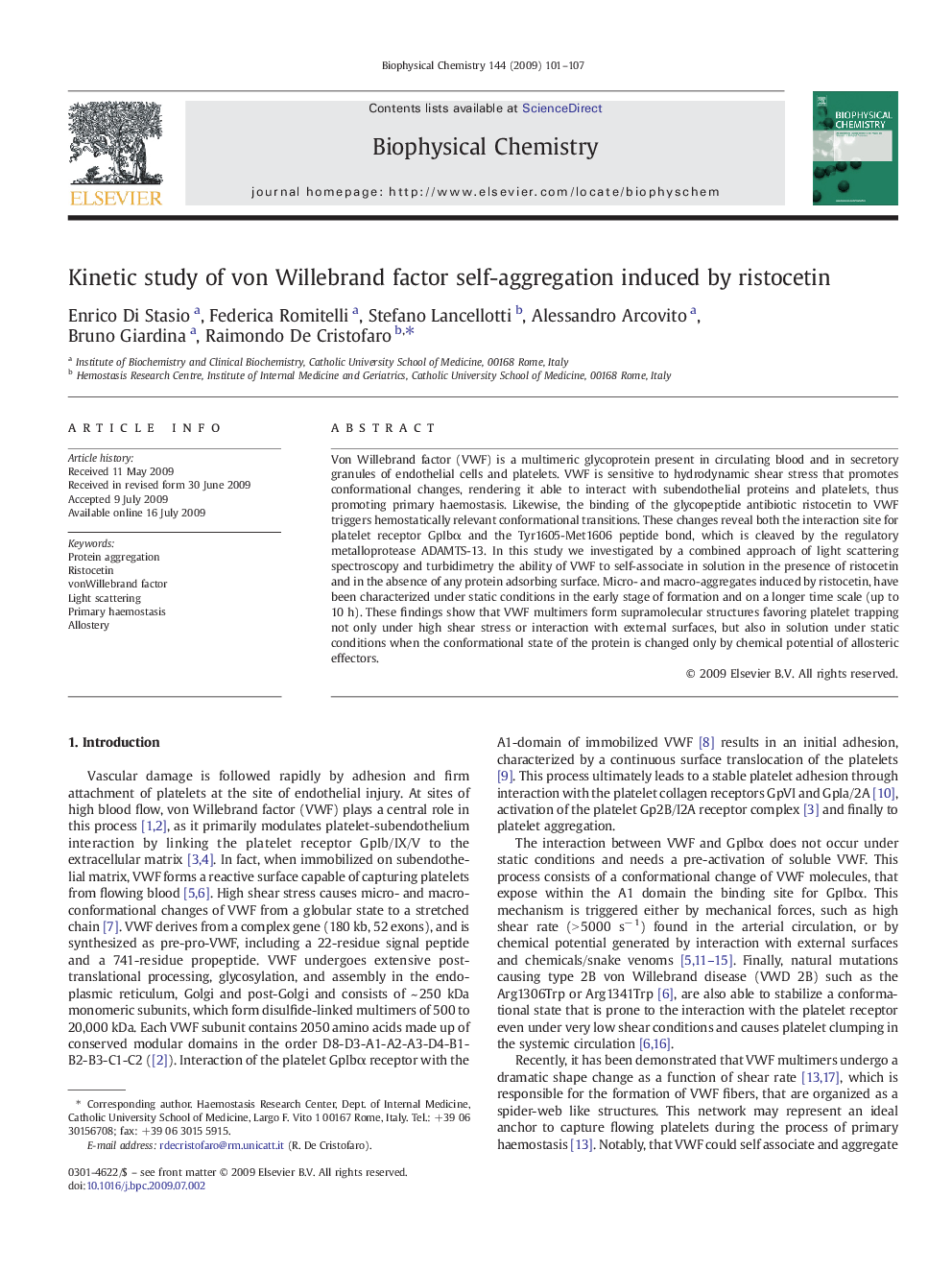| Article ID | Journal | Published Year | Pages | File Type |
|---|---|---|---|---|
| 5371773 | Biophysical Chemistry | 2009 | 7 Pages |
Abstract
Von Willebrand factor (VWF) is a multimeric glycoprotein present in circulating blood and in secretory granules of endothelial cells and platelets. VWF is sensitive to hydrodynamic shear stress that promotes conformational changes, rendering it able to interact with subendothelial proteins and platelets, thus promoting primary haemostasis. Likewise, the binding of the glycopeptide antibiotic ristocetin to VWF triggers hemostatically relevant conformational transitions. These changes reveal both the interaction site for platelet receptor GpIbα and the Tyr1605-Met1606 peptide bond, which is cleaved by the regulatory metalloprotease ADAMTS-13. In this study we investigated by a combined approach of light scattering spectroscopy and turbidimetry the ability of VWF to self-associate in solution in the presence of ristocetin and in the absence of any protein adsorbing surface. Micro- and macro-aggregates induced by ristocetin, have been characterized under static conditions in the early stage of formation and on a longer time scale (up to 10 h). These findings show that VWF multimers form supramolecular structures favoring platelet trapping not only under high shear stress or interaction with external surfaces, but also in solution under static conditions when the conformational state of the protein is changed only by chemical potential of allosteric effectors.
Keywords
Related Topics
Physical Sciences and Engineering
Chemistry
Physical and Theoretical Chemistry
Authors
Enrico Di Stasio, Federica Romitelli, Stefano Lancellotti, Alessandro Arcovito, Bruno Giardina, Raimondo De Cristofaro,
